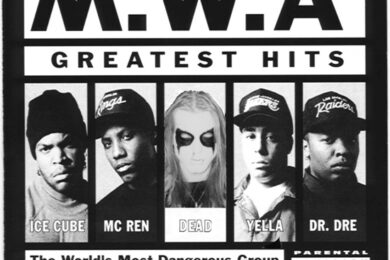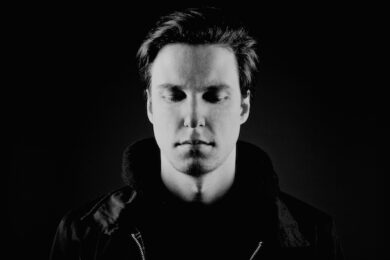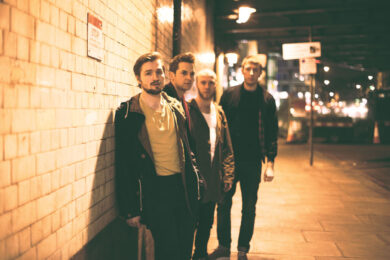It’s London, 1996. England creaks under the rust of seventeen years of Conservative governance; The Prodigy’s ‘Firestarter’ has been sat on top of the charts for three weeks and flannel shirts are very cool indeed. You find your place amongst the seats of the Brixton Academy – the place isn’t even close to sold out – and sip a beer as you wait for a forty-seven year old man to take the stage. He walks out alone and sits in a blue spotlight, with a greaser moustache and a shirt straight out of a Billy Joel music video. After performing the first song, he finally addresses the audience simply to ask for quiet throughout. He’ll play in this silence for two hours, talking as much as he sings. This isn’t a Steve Earl show, or Richard Shindell’s; this is Bruce Springsteen’s 1996 world tour.
A decade earlier, Springsteen was wrapping up the Born In The USA tour. It was the fifth biggest of all time, grossing $85 million in a little over a year ($200 million in today’s money). Every track from the album had been released as a single and, alongside The Rolling Stones, he and the E Street Band became one of the first acts to tour sports stadiums rather than arenas because demand was, essentially, bottomless.
Ten years on his star had fallen considerably. He released his ninth and tenth studio albums (Lucky Town and Human Touch) in 1992 on the same day: records with zero reason to be released simultaneously aside from their shared unimpressiveness. With Darkness On The Edge Of Town, Bruce might have been able to weather a transition out of peak superstardom with his image untouched but – crowded out of the charts by R.E.M., Nirvana and Sonic Youth on the rock end and rendered outdated by the flourishing of bicoastal hip hop on the other – this man never stood a chance. By the time he arrived at the Brixton leg of his 1996 tour, promoting his second acoustic album The Ghost Of Tom Joad, the man who had played to 3.9 million people between 1984 and 1985 was struggling to fill a 5,000 seat venue.
Twenty five years later, we know the end of this story. The man has a podcast with Barack Obama and has now scored more number one albums this century than the last. But the 1996 tour is a fascinating moment in the history of an enormous artist; one which asks whether, when it comes to musicians on the level of Springsteen, commercial failure can actually yield artistic liberation.
The Ghost Of Tom Joad is a fascinating album which contains absolutely no hits. The songs are delivered in a whisper, often without a chorus. There is a focus on characters who weren’t born in the USA at all, including Mexican immigrants and Vietnamese refugees. The Americans on the album are homeless or crushed by Reagan’s war on the poor. Springsteen knew that he wasn’t filling stadiums with this music; no singles were released from the album and ‘Youngstown’, the song which Columbia Records tried to pitch to radio stations, was met with derision. One programme director famously answered by saying, "Oh yeah, that’ll get everybody up and dancing." If Springsteen’s 1992 albums aimed for more radio success and flopped, with Tom Joad, Springsteen revelled in the lowered expectations.
The Ghost Of Tom Joad‘s tour ran over 128 dates between 1995 and 1997. It was his least commercially successful tour since his first, and saw the American Hero looking like the lead in a Gaspar Noé film. It was an inversion of everything he had come to be known for. He was "Bruce Springsteen And The E Street Band," but the band was long gone and Springsteen appeared alone with just an organist providing ambient backing off stage and out of view. He had always maintained a clean-cut, crowd pleasing persona which endures to this day, but on this tour, Springsteen sounded freed by the lower-stakes of his commercial situation, opening the show by saying, "It’s a night where the music’s quiet so I need quiet. Don’t make me come out and start slapping people around, ruining my nice guy image… Put your cameras away and shut the fuck up."
This final instruction became the de facto nickname for the tour amongst Springsteen diehards. On the entirety of the internet, there remarkably seems to exist only four grainy clips from across 128 whole shows. Despite being one of history’s best documented musicians, for a long time, the tour was a lone blackspot, and bootlegs flourished. It was through the most famous of these bootlegs, known as Brixton Night on seedy forums (not really, everyone seems super nice!) that I encountered the music. For years it was the only way: the first official release from the tour, from the Kings Hall, Belfast leg, was released by Brucespringsteen.net in 2017, but for 21 years the tour existed as something close to a secret, which only increased its legend. To my ears, this music is some of the best of Springsteen’s career.
The night’s 24 songs are drawn from across Springsteen’s catalogue but, parred down to their fundamentals and delivered only with a steel-stringed guitar, their commonalities are cast into sharp focus. Springsteen surrounds the songs with extended explorations of their themes and characters to the extent that, when the music begins, it’s just an extension of those stories. As the setlist unfolds, it becomes difficult to establish where different songs begin and end. It’s easy to imagine the young dreamers from ‘Atlantic City’ living next door to the ex-convict from ‘Straight Time’; both doomed by false hopes which Springsteen details with a kind of sneer. Wrapping music in soliloquy unveils the literary foundation at the heart of songs like ‘Bobby Jean’, normally buried in instrumental fireworks. It exposes Springsteen’s unique place in rock music; a man for whom John Steinbeck and Flannery O’Connor are more signifiant influences than actual musicians.
The songs which Springsteen selects contain a vein of nihilism at odds with the crowd-pleasing sentimentality used to market albums like 2012’s Wrecking Ball. Springsteen’s detached, objective storytelling lends itself to songs where characters’ lives are utterly at the mercy of forces political, social and self-destructive. One of the tour’s most harrowing tunes, ‘Straight Time’, sees an ex-convict return to his family only to be seduced back to habits he swore never to return to. "Seems you can’t get any more than half free… you get used to anything/ Sooner or later it just becomes your life."
Sentiments of racism and nationalism are similarly presented as forces beyond the control of individuals. On the noir-like ‘Galveston Bay’, Vietnamese refugees attempt to build a home in Texas, but before long, "in the bars around the harbour was talk/ Of America for Americans/ Someone said, ‘You want them out, you got to burn them out’/ And brought in the Texas Klan." With an affected Southern drawl, Springsteen presents hatred of outsiders as a tragic inevitability of American life, a grim diagnosis perhaps not that unsurprising coming from an artist who wrote a song called ‘The Klansman’ in the same year that he wrote ‘Glory Days’.
In other moments he pulls at inner threads, intimating something destructive within the hearts of men. On the dream-like ‘Highway 29’, he sings that "the winter sun shot through the black trees/ I told myself it was all something in her/ But as we drove I knew it was something in me/ Something that’d been comin’/ For a long long time/ And something that was here with me now/ On Highway 29." It sounds more like a Michael Gira ballad than something from one of America’s most enduring stars.
A 1996 New York Times review said that "Mr. Springsteen, envisioning a modern Depression, has taken his music to an extreme: a depressive’s view of tedious, unending woe." But "unending" is wrong: Springsteen almost universally speaks of tortured men (yes, men) and even the heroic characters in his music are "tramps" and "losers." The Tom Joad-era is satisfying because it pulls harder on the vein which has always energised Springsteen’s music, making the few moments of redemption feel well-earned. Dozens of heartland rock imitators heard only the sunshine and open-tops, and produced heaps of corny bilge because of it.
The hopelessness at the heart of even Springsteen’s most bombastic pop songs entered popular consciousness when he released Nebraska and Born In The USA in quick succession. The first was sonically and commercially sparse, featuring tales of bonafide murders which Rick Rubin called "the first punk acoustic album any of us ever heard." The second was one of the most popular albums of all time. A tension exists between the two records because many of the Born In The USA songs were written around the same time as the supposedly divergent Nebraska cuts, and this material had originally been destined for the stadium rock treatment as well. This resulted in the kind of dissonance most famously associated with title track ‘Born In The USA’, a damning inditement of a nation often mistaken, thanks to its bright horns and Max Weinberg’s ballistic drumming, as a song of devotion. But this is true of the entire album: is ‘Dancing In The Dark’ really any less bleak than ‘Johnny 99’? It’s all in the presentation.
Aptly, ‘Born In The USA’ got a rework for the Tom Joad tour, to bring it more in line with the newer material. Springsteen absolutely thrashes the steel strings of his guitar with a bottleneck, delivering its famous chorus in a pained, blues howl. I’m no detractor of his pop songs, but this version blows the original out of the water: furious, febrile and vengeful. For those who’ve seen Springsteen live at an ASK Italian arena, wearing a waistcoat with rolled up shirt sleeves, strumming a guitar and wondered, "Is he even playing that thing?" – this tour assuages any doubts about the power of his playing. During the unspooling narratives of the characters, he provides intricate accompaniment, while the harmonica solo he blasts at the end of the title track is transcendent.
There’s a tense atmosphere captured in the 1996 recording from Brixton, such is the enveloping intensity of one performer working alone for two and a half hours. Springsteen often cuts through the atmosphere with self-depreciating jokes and quick wit. When an adoring fan tries to offer praise, he states, "We got some kind of fucking soliloquy going on over there. First of all, I can’t understand what you’re saying. Second of all, you’ve got about three seconds left to say it in."
His scripted humour play less well. ‘The Pilgrim In The Temple Of Love’ is an odd new song about a shopping mall Santa receiving head in a car after hours. He’s having fun, but it’s on about the same level as the gags Bernard Manning might have coughed up from the same stage twenty years earlier. Blue material (as my Nan would have called it) is surprisingly typical of artists liberated from their statesmanlike duties as musical icons: Elvis Presley dabbled in it in Vegas the late 1960s, as did Chuck Berry eventually. It is also a reminder of the whiff of indignity which can accompany a humbled superstar.
Springsteen’s commercial nadir in the 1990s saw him selling tickets which would be the apex of many artistic careers, but it was also true that he was sunk not only by a lack of material but also by a sudden sense of irrelevance. It has happened to artists even more highly regarded than he. In the early 1970s, crippled by undiagnosed bipolar and exiled by American labels for her civil rights activism, Nina Simone could be found playing cafés in Paris to much smaller crowds than the Brixton Academy. Time was also hard on Johnny Cash, who spent the last half of the 1980s playing in small Southern casinos and occasionally even British holiday camps due to financial troubles.
While Simone’s career was hit by trauma outside of music, Cash fell out of favour as his sound limped way behind the trends of conservative country radio even. By the end of the ’80s he had been dropped by Columbia Records and hadn’t had a hit in a decade. His successful rejuvenation thanks to 1994’s American Recordings ingeniously reminded listeners of the fundamentals which gave him iconic standing to begin with, making the same stylistic choices as Springsteen in 1995: eschewing whatever else was going on in music, stripping his songs back to vocals and guitar and letting his performance speak for itself.
It would be lovely to write about great art produced by other artists of Springsteen and Cash’s stature when times got hard, but their sojourns into more difficult material feel like exceptions to the rule. Most artists reach commercial lows because they’re dried up, washed out and deemed utterly irrelevant to the sound of Now, consigned to the annals of history. Most of them respond simply by trying to recapture old glories as shamelessly as they can.
The Rolling Stones, the act with which Springsteen shared prime Sports Arena billing throughout most of the 1980s, responded to commercial trouble by replaying the same hand time and time again across the course of several albums and decades. Almost nobody on his level of commercial success seems to relish the potentially liberating effect of reduced commercial expectations. Springsteen’s own eventual recovery also came at an artistic cost: on records like The Rising and Working On A Dream – after the lyric-focused Brixton Night period – he regained a wide audience with an unprecedented commitment to narrative vagueness.
In 2021, Springsteen is startlingly ubiquitous. He finished an acclaimed Broadway run, documented in one of the four full-length films he’s released in the past five years, alongside two studio albums which are the first of this century to be on a par with the Tom Joad years. This fertile period was made possible by another reinvention, this time involving the dropping of a facade. In the Springsteen On Broadway show, he jokes about never having actually worked a blue collar job in his life, and Letter To You was the first of his albums written from the perspective of a musician. The orchestral Western Stars, meanwhile, is a cowboy album, yes, but at least one which made no bones about being bus pass cosplay.
Considered by detractors to be a one-note talent, Springsteen’s knack for reinvention is vastly overlooked. Contrary to almost every other artist of his standing, the challenging work he produced in reaction to his mid-’90s slump is reminiscent of those revered pop-stars who abandon their fame for more obscure sounds. Most obvious is Scott Walker, a hugely successful pop star in the Walker Brothers, who faded from mainstream view, only to fully re-emerge in the 1990s as a sui generis experimental outlier. Unlike Walker, Springsteen didn’t intend to reduce his audience however. On Lucky Town and Human Touch, he was striving to make hits, they were just fairly shoddy ones. What distinguishes Springsteen is that, instead of scrambling to recover commercial ground, he simply decided to stay there for a while. Listening to Brixton Nights, it’s clear that he relished the chance to explore ideas which wouldn’t have found a wide audience: deepening his interest in social realism, distorting his hits until they were unrecognisable and telling his audience to go fuck themselves if he felt like it.
Unlike the complete sonic reinvention Scott Walker had to undergo, it seems that Springsteen was able to thrive creatively under these circumstances because of the tension which already existed in his most successful songs. Throughout his career, he has largely chosen to present harrowing stories with the comforting decor of arena rock, but for a few years the "Shut The Fuck Up Tour" granted him the chance to experience the other career, in which he told those stories straight. The experience produced some of his finest work. It’s the kind of venture which makes you rue the commercial expectations placed on some of our most interesting commercial talents, and wish upon them that plummet from the charts, if only for a tour or two.


















